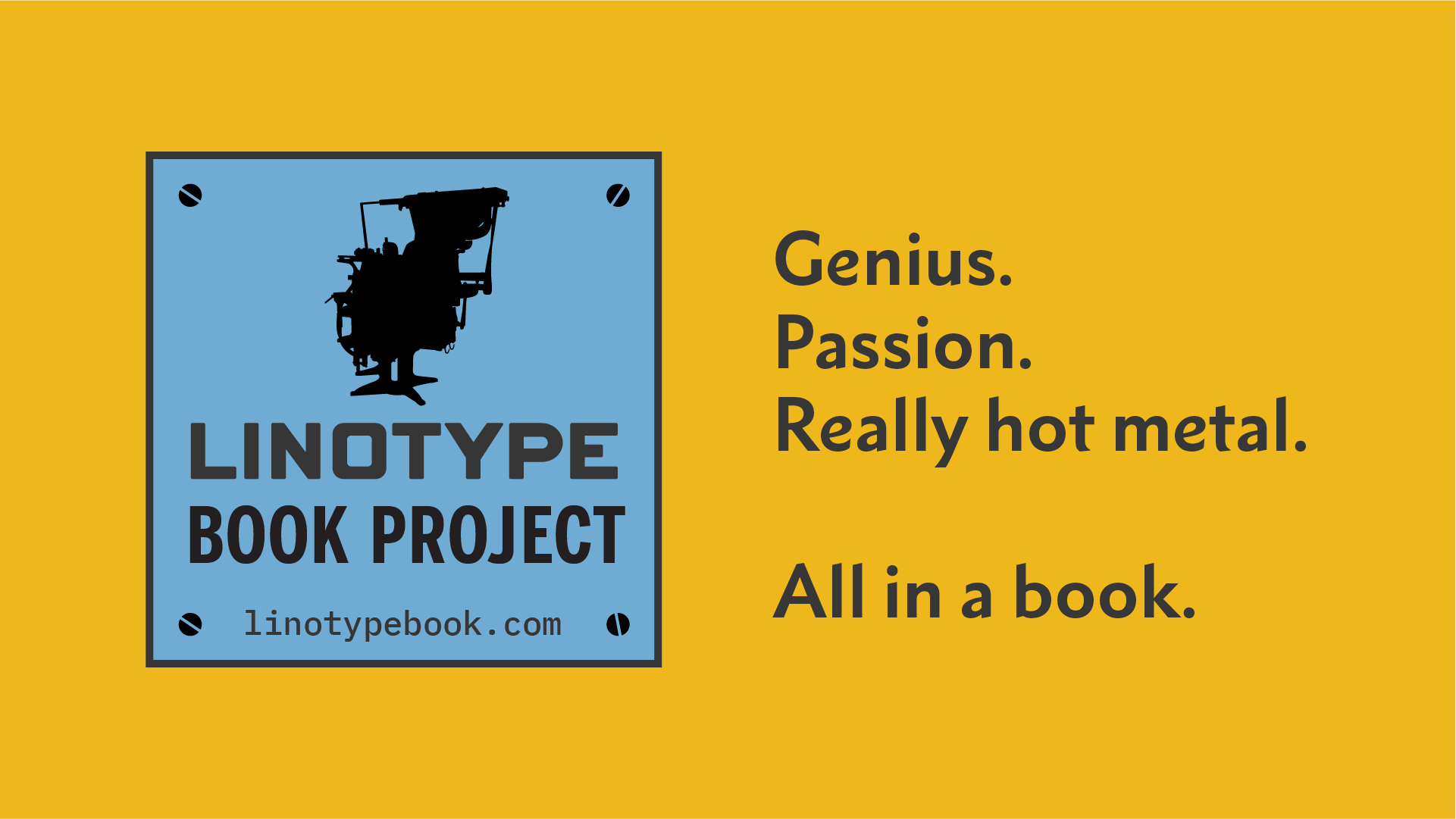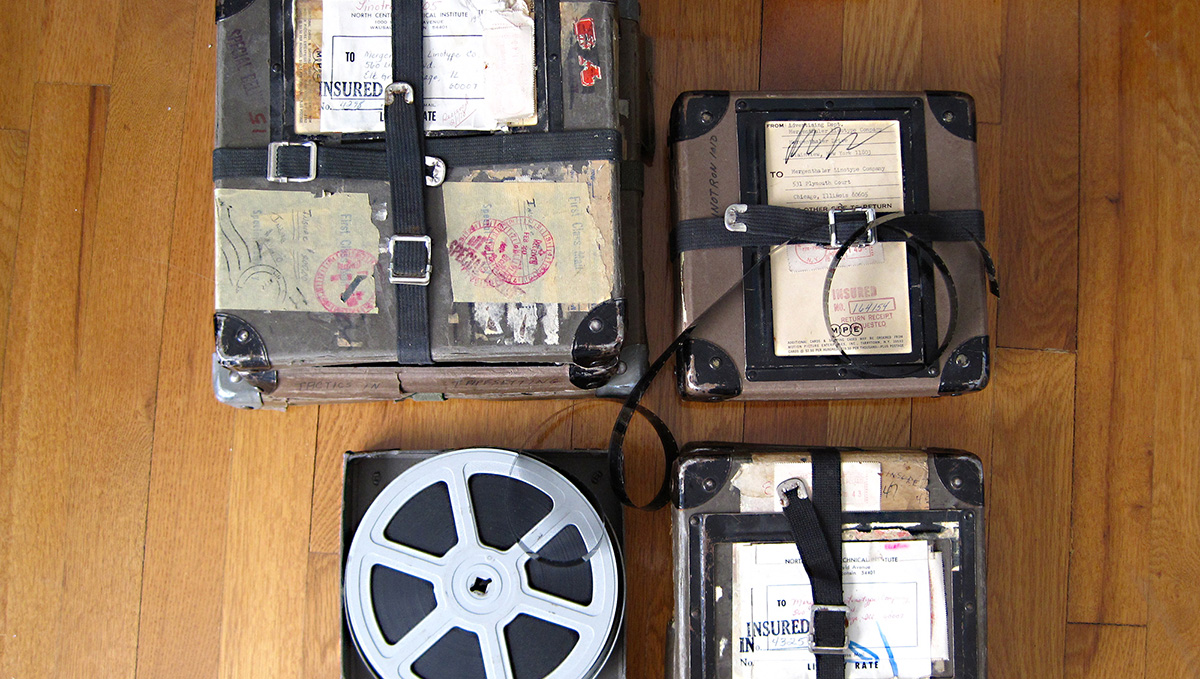
New Additions to the Printing Films Archive
I’ve added five new (old) films and scanned many in 4K
Published: 22 Oct 2025
Topics: Design, Film, Typography, Linotype, History
TL;DR: New films, better quality, more to enjoy!
A Decade of Quirky, Fascinating Films
After the release of my film in 2012, I had a Rubbermaid container full of 16mm film reels and a hard drive full of files based around printing, typography, communications, and journalism. They were a captivating glimpse into how things were made and how things changed in a very-specific industry. I felt that I couldn’t just hog them for myself — the rest of the world needed to see them!

So I created the Printing Films Archive in 2015. Since then, the films have been available for free to anyone and I’ve been pleasantly surprised at the views the films have received and the occasional emails that come in thanking me for rescuing these films from obscurity.
For the launch in 2015, I released approximately 25 films and then donated the physical film reels to the Museum of Printing for long-term storage and returned the rest to Monotype’s archive in the U.K.
Large Reels of Films in Large Suitcases
A few months ago, I was approached by Nick at Periscope Film who said he loved the archive and asked if I would be interested in digitizing the films in 4K. The answer was immediately: YES.

Due to my position of working for Monotype at the time, I was able to pick up films from the MOP in Boston and request the films be pulled out of Monotype’s deep-storage archive in England. Both times, I filled my suitcase with nearly 70 lbs. films and had to carry my clothes and toiletries in canvas tote bags. Priorities, people!

I sent them to Los Angeles for scanning and having them digitized at over twice the resolution made a big difference in the quality and helps preserve them longer into the future.
Five New Films and an Upgrade
In total, I had 15 films scanned in 4K which includes five completely-new films and one film remastered with better lighting, contrast, and quality.
The TL;DR here is: new films, better quality, more to enjoy. Let me highlight below the new and updated films and why I think you should get lost in the archive.
Type Faces in the Making - Circa 1955
Of all the new films added to the collection, I am probably most excited about this film because it clearly shows the entire process of making type at Monotype; from the original type design to finished, cast metal letters on a Monotype composition caster.
At the beginning, you also see how they could easily trace a technical drawing, reproduction from a book, or even copy a design directly from a sort of metal type (bringing into question the subject of type piracy of other foundries?)
For anyone even slightly interested in type design and manufacturing, this film is worth your time. And if you’re curious to contrast how the Monotype process compares with Linotype and ATF, you can watch “The Eighth Wonder” or “Type Speaks”, respectively, to see their processes. There are some interesting similarities and differences to note.
‘Monophoto’ Filmsetting Machine - Circa 1958
Based on the assumption that printers and typesetters would take much longer to convert to new photo technology, Monotype took a far-too-cautious approach to phototypesetting in the 1950s and ’60s.
The ‘Monophoto’ machine was their first attempt at phototypesetting, but it relied too heavily on keeping the machine similar to the existing, hot-metal machines which meant they simply replaced the hot-metal pot with a camera and the brass matrices with film matrices.
While Linotype and other companies were revolutionizing their machines completely, Monotype spent 15 years promoting the ‘Monophoto’ which nearly bankrupted the company (but that’s a whole other story).
Modules Make Sense - Circa 1968
As explained above, Monotype was very slow in recognizing new phototypesetting technology and spent too long trying to repurpose their familiar hot-metal machines for photo composition and eventually fell FAR behind their competition.
By the mid 1960s, Monotype recognized this; so they made a film to showcase their newer, computer technologies that were finally coming to the market. Based on the idea of modules which could be interchanged as needed for printers’ and typesetters’ specific needs, Monotype is desperate to show their high-tech circuit boards and tape-reading computers.
Stay Put! - 1955
This film showcases a short-lived — though highly-advanced — reproduction camera useful for enlarging and reducing images and illustrations for photocomposition and offset printing. Why they thought tying someone’s legs together was a funny idea, I’m not sure?
If nothing else, this film is worth watching to see the bumbling old man chain-smoking cigarettes while having to move all around the room to make camera-ready film outputs the “old fashioned way.”
Hot Line to Profit - Early 1970s
If you’re not interested in the Monotype — and want to see some fantastic 1970s fashion — then I suggest you check out “Hot Line to Profit” created by the Graphic Arts Technical Foundation.
This film advertises their association of 1,200 printers from all over the United States who banded together to have an organization that furnished research, support, and technical services for the industry.
The GATF had the latest printing and typesetting machines and would do research for all sorts of printing companies to make sure they were on the vanguard of technology and up-to-date on the most recent techniques for profitable printing.
Wide ties, huge collars, and even bigger hairstyles — this film has it all.
Monotype School Story Upgrade
One film that I had digitized back in 2015, but was never happy with the quality, was “School Story” by Monotype. With the new scan, the quality and exposure of the film is now much better and I hope more people will now enjoy it as much as I do.
This film, with an incredibly awkward intro of people kissing (?!), showcases the Monotype School in London, which taught keyboarding basics for the Monotype composition machine. At this time, photo technology had already taken over, but Monotype was still convinced hot metal would last much longer then it eventually did.
If you’re curious what people in the UK looked like in the late 1960s, check this film out for the groovy styles alone.

Like and Subscribe
It is my hope that you enjoy these films and share them with anyone curious about how letters made it onto paper. It’s something seemingly simple that was, in fact, wonderfully complex and required extremely-specialized skills.
I spent my valuable suitcase space on these films not just for nostalgia’s sake but rather to give everyone a greater background of typography, printing, and communication. It’s my firm belief that understanding the past is vital to our perception and acceptance of the future — whatever technologies arise.
Visit the Printing Films Archive and get lost. Who knows, you may even learn something in the process?

